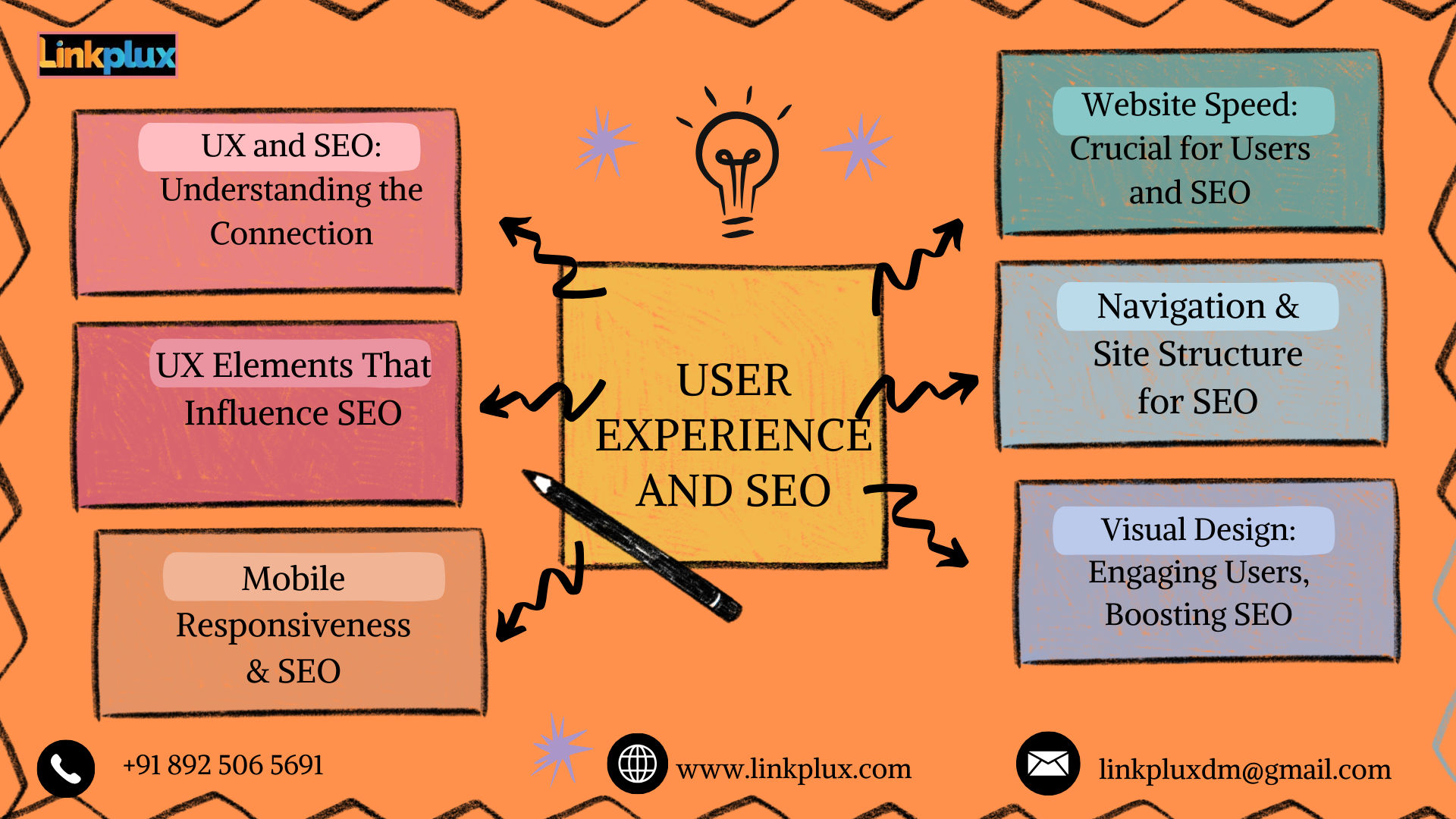Understanding the Nexus between UX and SEO
In the realm of website development, User Experience (UX) and Search Engine Optimization (SEO) are tightly intertwined disciplines. Both prioritize delivering users a seamless browsing experience and relevant content. UX strives to meet user needs and expectations, ensuring effortless navigation and engagement, while SEO concentrates on enhancing website visibility and accessibility to search engines, ultimately aiming for top rankings in search results and attracting organic traffic. This interdependent relationship is fundamental in website development and is often managed by a reputable Digital Marketing Agency.
Impactful UX Elements on SEO

Key components of UX significantly influence SEO outcomes. Mobile responsiveness, highlighted by Google for mobile-friendly sites, ensures smooth browsing across devices, improving user satisfaction and SEO rankings. Moreover, website speed directly impacts user engagement and SEO metrics, including bounce rates and dwell time. Intuitive navigation and structured content further enhance user experience, reducing bounce rates and indicating relevance to search engines. High-quality, keyword-optimized content attracts backlinks and social shares, thereby enhancing search visibility. Additionally, engaging visual design elements contribute positively to user engagement and SEO metrics.
Mobile Responsiveness & SEO
Mobile responsiveness is critical for contemporary websites, especially considering Google's preference for mobile-friendly sites in search rankings. A mobile-friendly design guarantees optimal viewing experiences across various screen sizes, fostering user satisfaction and engagement—key factors for SEO success. Consequently, prioritizing mobile responsiveness enhances SEO performance, resulting in heightened visibility and organic traffic.
Impact of Website Speed on User Satisfaction and SEO
Website speed significantly influences both user experience and SEO efficacy. Users expect swift-loading sites, and search engines reward them with higher rankings accordingly. Conversely, sluggish websites frustrate users, leading to increased bounce rates and diminished engagement, which negatively impacts SEO metrics. By optimizing website speed through methods like image compression and file optimization, website owners can enhance both user experience and SEO performance, ultimately leading to heightened visibility and organic traffic.
Navigation & Site Structure for SEO Success
Efficient website navigation and structure are crucial for enhancing both user experience and SEO performance. Clear navigation assists users in finding information effortlessly, resulting in reduced bounce rates and improved engagement. From an Search Engine optimization(SEO) perspective, a well-organized site aids search engine crawlers in indexing content effectively, thereby enhancing visibility in search results. Prioritizing intuitive navigation and structured content thus benefits both user experience and SEO, resulting in a seamless browsing experience and enhanced search engine rankings.
Balancing Content Quality for UX and SEO

Striking a balance between content quality for User Experience (UX) and Search Engine Optimization (SEO) is imperative for website success. High-quality content engages users and satisfies search algorithms, leading to improved rankings and visibility. Relevant and valuable content meets user needs and promotes interaction, thereby enhancing UX. Simultaneously, well-optimized content signals authority to search engines, further improving rankings. This equilibrium ensures informative, engaging, and optimized content, resulting in a positive user experience and robust SEO performance, ultimately driving organic traffic and overall success.
Enhancing SEO through Visual Design
Visual design significantly contributes to user engagement and SEO effectiveness. Appealing layouts and multimedia content foster user engagement, indicating relevance to search engines. Additionally, well-crafted visuals aid in effectively conveying information, thereby improving content comprehension. Prioritizing visually appealing elements enhances user experience while simultaneously boosting search engine visibility and rankings.
Insights from User Interaction Metrics for SEO
User interaction metrics offer valuable insights for optimizing SEO strategies. Metrics like bounce rate, dwell time, and pages per session reflect user engagement levels. Low bounce rates and high dwell times indicate valuable content, benefiting SEO efforts. Similarly, increased pages per session suggest deeper user engagement. Analyzing these metrics helps refine content and user experience, leading to enhanced SEO performance and increased visibility in search results.
In conclusion, integrating User Experience (UX) with Search Engine Optimization (SEO) is essential for achieving website success. Prioritizing elements like intuitive navigation, swift loading times, quality content, and engaging design not only enhances user satisfaction but also boosts SEO performance. This synergistic approach results in heightened visibility, improved rankings, and increased organic traffic, ensuring long-term online success.

No comments yet